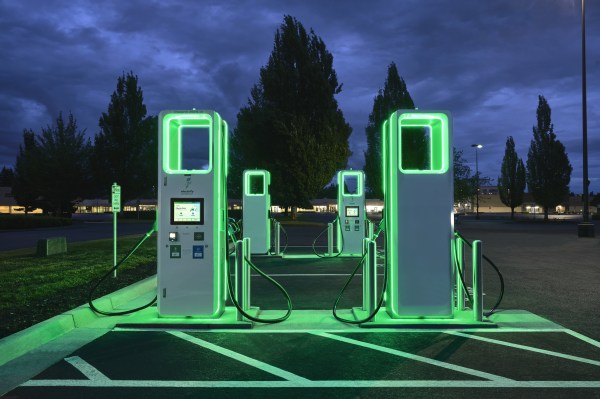EV fast-charging networks face a challenging 2024
Sometime in 2024, maybe as early as February, half a dozen electric vehicle charging companies will face a reckoning.
For years, they had little competition except for each other, which is to say, not much. Soon, though, they’ll have to contend with Tesla’s much-lauded Supercharger network.
The EV world, from a charging perspective, was previously split in two. There was Tesla and then there was everyone else. Tesla owners enjoyed widespread, speedy and reliable charging. Everyone else made do by cobbling together accounts from a number of different companies, none of which could boast reliability ratings anywhere near that of Tesla’s.
Then, in May, the wall fell. Ford signed an agreement with Tesla to give its EVs access to 12,000 Superchargers, a subset of the network. Starting in 2024, existing owners will be able to charge at those stalls by using an adapter, and in 2025, Ford said its future EVs will swap the Combined Charging System (CCS) plug for Tesla’s plug, also known as the North American Charging Standard (NACS).
Other automakers soon followed suit. GM was next, then Rivian, Volvo, Mercedes, Nissan, and pretty much everyone else. One of the last to adopt the plug was Volkswagen, which isn’t a surprise given its majority ownership of Electrify America, which was supposed to be the CCS equivalent of the Supercharger network.
EV owners like myself had —and still have — high hopes for Electrify America. The company was founded out of the Volkswagen diesel settlement, and it was the first non-Tesla network to prioritize nationwide DC fast charging at speeds that could support modern EVs. When Electrify America’s best chargers work, they are indeed fast, faster even than the majority of Tesla’s Superchargers.

Sometime in 2024, maybe as early as February, half a dozen electric vehicle charging companies will face a reckoning.
For years, they had little competition except for each other, which is to say, not much. Soon, though, they’ll have to contend with Tesla’s much-lauded Supercharger network.
The EV world, from a charging perspective, was previously split in two. There was Tesla and then there was everyone else. Tesla owners enjoyed widespread, speedy and reliable charging. Everyone else made do by cobbling together accounts from a number of different companies, none of which could boast reliability ratings anywhere near that of Tesla’s.
Then, in May, the wall fell. Ford signed an agreement with Tesla to give its EVs access to 12,000 Superchargers, a subset of the network. Starting in 2024, existing owners will be able to charge at those stalls by using an adapter, and in 2025, Ford said its future EVs will swap the Combined Charging System (CCS) plug for Tesla’s plug, also known as the North American Charging Standard (NACS).
Other automakers soon followed suit. GM was next, then Rivian, Volvo, Mercedes, Nissan, and pretty much everyone else. One of the last to adopt the plug was Volkswagen, which isn’t a surprise given its majority ownership of Electrify America, which was supposed to be the CCS equivalent of the Supercharger network.
EV owners like myself had —and still have — high hopes for Electrify America. The company was founded out of the Volkswagen diesel settlement, and it was the first non-Tesla network to prioritize nationwide DC fast charging at speeds that could support modern EVs. When Electrify America’s best chargers work, they are indeed fast, faster even than the majority of Tesla’s Superchargers.
